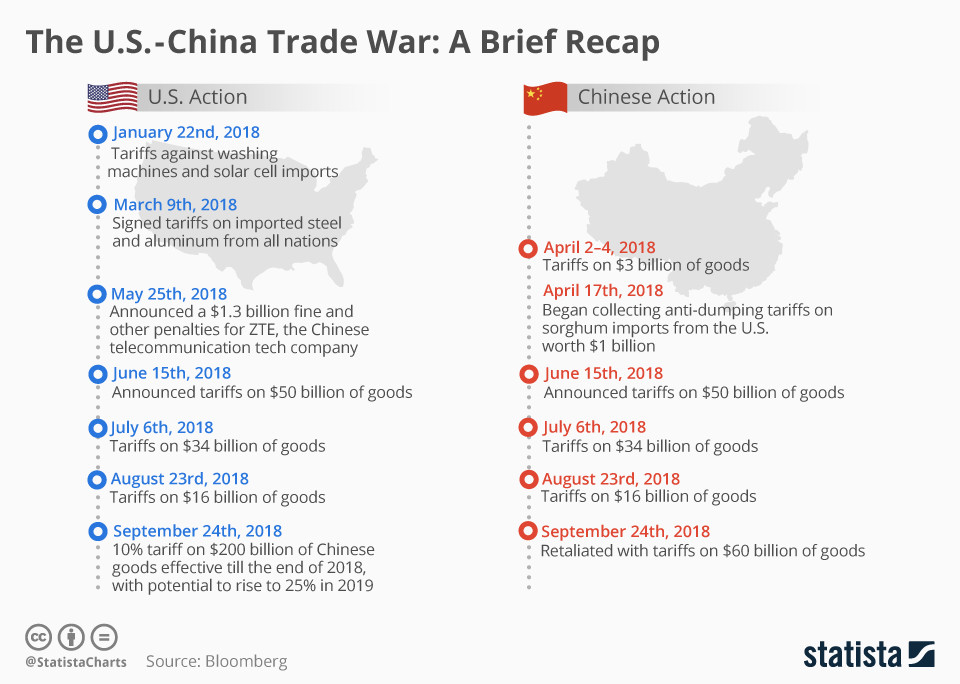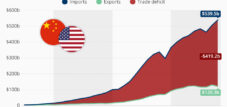Two days ago, China announced 25 percent tariffs on $60 billion worth of U.S. goods, effective June 1. The move comes after President Trump imposed 25 percent levies on $200 billion of Chinese goods late last week. Trade relations between the world's two largest economies appeared to deteriorate last week after four months of talks that began after the G20 summit in Buenos Aires.
The back and forth began in January last year when the US imposed protective tariffs on washing machines and solar cell imports. Less than a month later, President Trump signed tariffs on imported steel and aluminum from all nations. While this was aimed at all nations, China is the largest steel exporter in the world.
By mid-June, the tit-for-tat trade dispute continued to develop: Trump announced 25 percent tariffs on $50 billion of Chinese goods. China announced tariffs of that amount on the same day. Both countries introduced the taxes over the summer. In late September, Trump imposed a 10 percent tariff on $200 billion of Chinese goods, effective through the end of 2018, with the potential for it to rise to 25 percent by the end of the year. President Xi responded with 25 percent tariffs on $60 billion worth of goods. Although things looked hopeful after the G20 summit, an agreement has not yet been reached.
U.S. stocks plunged on Monday after China released news of its June 1 tariffs. Analysts are predicting a more volatile stock market as the two countries compete.
2 days ago China announced 25 percent tariffs on US goods worth $60 billion, effective June 1st. The move comes after President Trump placed 25 percent levies on $200 billion of Chinese goods late last week. Trade relations between the world's two biggest economies appeared to deteriorate last week after four months of talks, which began after the G20 Summit in Buenos Aires.
The back-and-forth started in January of last year when the US rolled out safeguard tariffs on washing machines and solar cell imports. Less than a month later, President Trump signed tariffs on imported steel and aluminum from all nations. While that was a move directed at all nations, China is the world's largest steel exporter .
By mid-June, the tit-for-tat trade dispute developed further, with Trump announcing 25 percent tariffs on $50 billion of Chinese goods. China announced tariffs matching that amount that same day. Both countries rolled out the levies over the course of the summer. In late September, Trump instated a 10 percent tariff on $200 billion of Chinese goods effective until the end of 2018, with the potential for it to rise to 25% at the end of the year. President Xi responded with 25 percent tariffs on goods worth $60 billion. While things looked hopeful after the G20 Summit, a deal has still not been reached.
US stocks plummeted Monday after China released news of its June 1st tariffs. Analysts predict a more volatile stock market while the two countries face-off.


